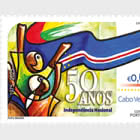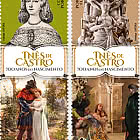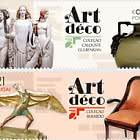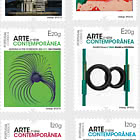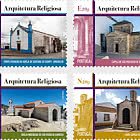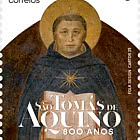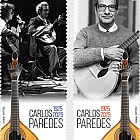It is entirely possible that 2023 marks the 500th anniversary of Casa dos Bicos. We do not know the exact date of construction, the architect who designed it or the models that served as inspiration for this highly unusual work. It is, however, the most famous renaissance noble house in Portugal, home of the first president of the Lisbon municipal senate and an exceptional cultural facility in the historic centre of the capital.
It was commissioned by Brás de Albuquerque (c. 1500-1581), the illegitimate son of Afonso de Albuquerque (1443-1515), governor of Portuguese India. The family owned the land from the early fifteen-hundreds, a plot with an excellent location in Ribeira Velha, a distinguished area of the 16th-century city. In around 1520, Brás married Maria Ayala Noronha, daughter of a noble in the court of King Manuel I (r. 1495-1521). The fortune and cultural renown he accumulated allowed for the construction of a house thought to be without parallel in Lisbon at that time. The dramatic and imposing façade facing the river was intended to illustrate the prestige and wealth of Brás de Albuquerque and his notable lineage.
The nobleman formed part of the matrimonial retinues of princesses Beatrice (Nice, 1521) and Isabella (Seville, 1526). These journeys were regarded as opportunities to become familiar with other renaissance houses, some of which may have served as a model for the residence in Lisbon. However, there is some doubt as to whether Brás de Albuquerque even visited Italy, in 1521, and on the journey to Seville he may not have taken advantage of this supposed prospecting opportunity. Another explanation is based on the architect’s choices. The building has been attributed to Francisco de Arruda, although without any documentary basis. The architect did include Italianate elements in his works, such as the loggia of the Kings' Hall at Belém Tower (completed in 1519). It is most likely, however, that Casa dos Bicos was the work of an Italian or Spanish architect who became established in the courtly circle frequented by Albuquerque.
The house had four floors on the main façade and two to the rear, due to the sloping ground. On the ground floor, there was a passageway linking Ribeira Velha to the old Rua dos Arcos, now Rua de Afonso de Albuquerque. The essence of the decoration and noble emblems of the owner were concentrated on the main façade. The elevations were covered by ashlars with pyramidal peaks that emulated the points of a diamond. The third floor had a loggia supported on three arches, which displayed the coat of arms of Brás de Albuquerque.
The upper floors of the "House of Diamonds" were destroyed in the earthquake of 1755. These were only reinstated from 1981, in a reconstruction project based on views of the property prior to the quake. In 1983, when the house was adapted into a museum, archaeological excavations were also carried out at the site. The extraordinary spoil unearthed at that time included a group of Roman salting tanks, the foundations of part of the Cerca Velha (the old city wall), floors, tiles and kitchenware from before the earthquake. The oldest pieces of evidence, however, are much older than the Roman occupation. They date back to the Iron Age and the first contact with the Phoenicians, between the 8th and 5th centuries B.C.E. Some of these objects can be seen in the archaeological area on the ground floor, one of five hubs of the Museu de Lisboa. The José Saramago Foundation has its headquarters on the upper floors.
Casa dos Bicos is turning 500, but it tells the story of nearly two and a half millennia of urban transformation of the ancient Lisbon waterfront.







